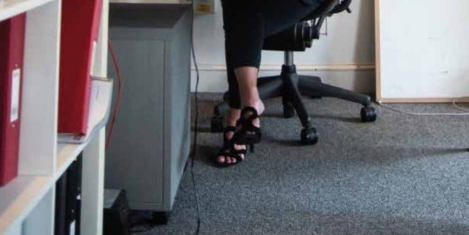September 17, 2018
AI will be commonplace in the working lives of staff very soon
 Experts at Henley Business School have announced that the majority of the graduate workforce in the UK will be working with artificial intelligence on a daily basis by 2030, with technology such as ‘AI assistants’ expected to be commonplace in the next decade. New research released at the Henley annual World of Work 2030 conference, claims that a third (35 percent) of UK workers are excited about the prospect of their own personal AI assistant. With the average worker currently spending 3.5 hours a week on admin tasks, assistants’ could give workers back 12 working days a year (over two working weeks) by taking on these activities and freeing up time for more productive tasks.
Experts at Henley Business School have announced that the majority of the graduate workforce in the UK will be working with artificial intelligence on a daily basis by 2030, with technology such as ‘AI assistants’ expected to be commonplace in the next decade. New research released at the Henley annual World of Work 2030 conference, claims that a third (35 percent) of UK workers are excited about the prospect of their own personal AI assistant. With the average worker currently spending 3.5 hours a week on admin tasks, assistants’ could give workers back 12 working days a year (over two working weeks) by taking on these activities and freeing up time for more productive tasks.











 Recent ONS figures showing a rising employment rate could be inflated by the growth of zero-hour contracts within the gig economy, as the number of UK workers on zero hour contracts having more than tripled since 2012. This is propping up overall employment levels by accounting for almost a quarter of overall employment growth, new data by Adzuna has suggested. With the employment rate currently at a record high of 75.7 percent according to the ONS, Adzuna’s data compares recent growth in the number of people in work overall to the increasing number of zero hour contracts, to ascertain how much these contracts have contributed to the growth.
Recent ONS figures showing a rising employment rate could be inflated by the growth of zero-hour contracts within the gig economy, as the number of UK workers on zero hour contracts having more than tripled since 2012. This is propping up overall employment levels by accounting for almost a quarter of overall employment growth, new data by Adzuna has suggested. With the employment rate currently at a record high of 75.7 percent according to the ONS, Adzuna’s data compares recent growth in the number of people in work overall to the increasing number of zero hour contracts, to ascertain how much these contracts have contributed to the growth.
 Employers considering new flexible working options for their employees are concerned about the security and management implications, according to a recent poll, despite the fact that staff now have the legal right to request flexible arrangements. The survey of medium sized businesses, carried out for RSM by YouGov, found that over the next five years, three quarters of respondents were considering introducing flexible terms of employment, allowing workers to work outside 9 to 5 or increasing the use of remote working.
Employers considering new flexible working options for their employees are concerned about the security and management implications, according to a recent poll, despite the fact that staff now have the legal right to request flexible arrangements. The survey of medium sized businesses, carried out for RSM by YouGov, found that over the next five years, three quarters of respondents were considering introducing flexible terms of employment, allowing workers to work outside 9 to 5 or increasing the use of remote working.





















